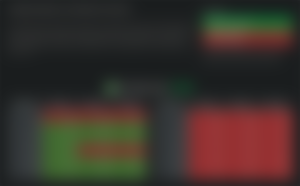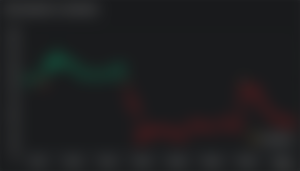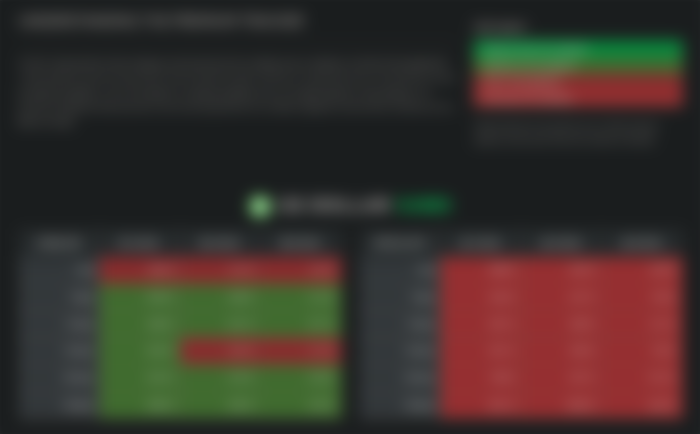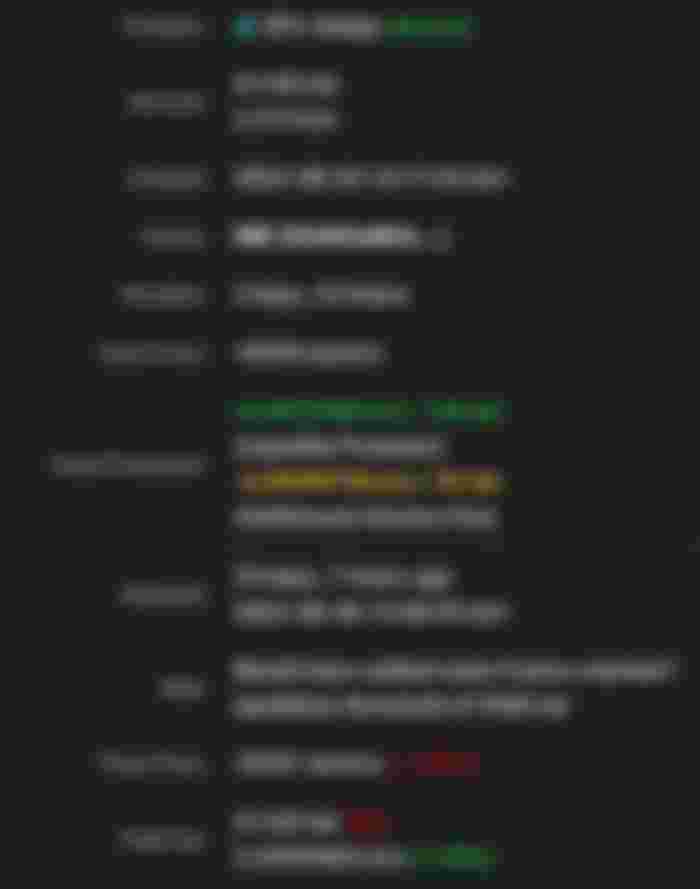How I Earned Almost 5% in One Month by Hedging on BCH Bull
BCH Bull is a platform built on top of the AnyHedge protocol. Anyone can use BCH Bull to do one of two things:
Go long, with leverage, on Bitcoin Cash against other currencies or metals.
Hedge the value of your Bitcoin Cash in terms of other currencies or metals.
When you go long on Bitcoin Cash, you assume the risk of the price of BCH going down against the other currency or metal defined in the contract. And, since it's leveraged, that risk is multiplied. But on the other hand, if the price of BCH appreciates against the other currency or metal, your benefit is multiplied.
When you hedge the value of Bitcoin Cash against another currency or metal, at the end of the contract you will receive the same exact value you started with. If the price of BCH goes up against the other asset in the meantime, you will receive less BCH. If the price of BCH goes down against the other asset in the meantime, you will receive more BCH. But in either case, the value of your BCH, denominated in the other currency or metal, will be retained. It's essentially risk free, if you're only interested in preserving that value denominated in the non-BCH asset.
The user decides the amount, duration of the contract, and the leverage/protection. The BCH Bull website has good explanations. Also, feel free to read the AnyHedge whitepaper for details on how it works. The key is that it all works non-custodially, so nobody is at risk of losing their funds.

There are always two parties in each BCH Bull contract. If you go long, someone else is hedging. If you hedge, someone else is going long.
In most cases, the counterparty is the BCH Bull liquidity provider (LP). The LP does not want to be a market player. Instead, the goal of the LP is to earn fees for the use of their capital in BCH Bull contracts. Therefore the LP tries to balance out the longs and the shorts. As a result, depending on where the market demand is for contracts, the LP either charges or pays out premiums to BCH Bull users.

When I was taking a close look at all this, I noticed that typically, but not always, those who hedged were paid premiums (presumably because long contracts are usually in very high demand). I noticed that, if one had USD not currently tied up in anything, one could earn interest on it by simply putting it into BCH Bull hedge contracts. And then one could, optionally, keep those premiums as BCH. And there you have it: "Free" BCH for the taking with basically no risk.
It turns out I did have some USD sitting around. I decided to experiment with it on BCH Bull to see if I could consistently earn premiums and understand firsthand how well such an investment could do.
The Long and Short of It
After investing a maximum of $3000 for 29 days, I extracted $144.76 worth of BCH in premiums. Without considering other factors, that is a 4.83% return in just a month.
(Note: That $144.76 represents the combined USD value of BCH premiums I earned at the time I received them. It ended up being ~0.64 BCH all told.)
That is a phenomenal return for a very low-risk investment, if I do say so myself. And that is without compound interest as I kept the premiums as BCH and did not reinvest them.
If one could repeat that same ROI every month, that would be an annual interest rate of 57.9% earned through hedge premiums. Not too shabby.
Of course, that is not the entire story. There were indeed other factors at play. And I'm not currently hedging anymore. So what happened? Let's dive in.
Amounts
To start off, I earmarked $1000 for the experiment but I did not put it all in at once. Instead I put in $100 every day for 10 days.
One big reason for that is that the premiums offered change regularly. Sometimes they are fantastic, sometimes they seem more meager, and other times the premiums basically dry up (more on that later). Due to these facts, I wanted to spread out my hedges to get the best average return.
Once I got to $1000, I saw no reason to not go in with more. So I put in another $1000, but this time all in one day. However, I entered in three different contracts for three different lengths of time.
After another few days (9 days into the experiment), I dumped in another $1000 for a grand total of $3000 invested. I did not put any more in after that.
Approach
How did I decide on the duration of each contract? The contract duration will change the premiums offered (or charged), depending on market conditions within BCH Bull. Often, but not always, the longer the duration of the hedge, the bigger the premium offered.
But it's not a matter of simply getting the largest premium. If you always go for the largest premium and hedge for a lengthy amount of time, you will pay the opportunity cost of not being able to hedge and earn premiums in the meantime. The goal was to find the most efficient hedge duration, depending on the premiums offered.
I kept a spreadsheet to help me figure out what duration to choose each time I made a hedge. Column A was static and had the possible days of contract duration (1-90). In column B I entered the current interest rate offered for each contract duration. Column C had formulae to calculate the APY of each offered premium (assuming it could be repeated endlessly).
It was fairly easy to zero in on the optimal period so I never got anywhere close to entering 90 different premium rates. I could usually get away with entering just a few different days of premiums. Also, offered premiums will change depending on hours and minutes, not just days, so calculate accordingly.
The results from the formulae helped me choose the most effective contract duration whenever it was time to hedge.
But I didn't necessarily simply choose the highest APY each time. Remember, I wanted to spread out my hedges and have a regular turnover so that I could, on average, get the best premiums. If I put the entire investment on the best possible premium one day, I might miss out on even better premiums before the contract matured.
Therefore, sometimes I would choose the second-best APY, if it helped to spread out the hedges, especially if it was almost as good as the best option. It was a balancing act and sometimes it required on-the-spot judgment calls that could have gone either way. I typically had my investment spread out into 5 or 6 chunks and the best possible premiums were almost always for contract durations between one and seven days.
Platform
My platform of choice to enter BCH Bull contracts was the Paytaca wallet. The Paytaca dev team has seamlessly integrated BCH Bull directly into the app for a high-quality longing or hedging experience. It's the same service as BCH Bull, just without using the BCH Bull front end. The Paytaca app keeps a record of all your current and previous positions.

There were a few times I used the BCH Bull app itself. Once it was because I kept running into errors on the Paytaca wallet. All the other times it was because I wanted to hedge in a currency other than USD and Paytaca has so far only enabled USD positions.

Complications
Lack of Premiums
There were a few times where one or more of my hedges would mature but there were no good premiums offered at that moment. And I didn't want to hold my investment as BCH. The point of the experiment was to make sure I could keep my investment of $3000 intact, send my BCH premiums to a separate wallet, and see how well the investment could do overall. Holding my investment as BCH outside of a hedge contract, waiting for good premiums, would risk diminishing my investment.
The first time this happened, I looked at the non-USD national currencies offered on BCH Bull (not available in the Paytaca wallet). Out of the other currencies, the Indian Rupee (INR) had been tracking very closely with USD in recent years. So, with no possible premiums to earn for hedging in USD, and premiums offered for hedging in INR, I treated INR as a USD proxy. Any time there weren't any good premiums offered to hedge in USD, I simply hedged in INR.

Fees
Another complication was the fact that losing some of the original investment was unavoidable through BCH Bull settlement fees. Paytaca also charges a very small wallet fee (a few pennies) on top of that when hedging through their wallet.
Up until the very last day of the experiment, I had lost approximately $15 to these fees. That's only 0.5%. When you account for those fees, my updated ROI was closer to 4.32%. Still very good.
To counter the fees and prevent the slow but constant dwindling of my $3000, I was planning to keep a small portion of my earned premiums in my hedging wallet on a monthly basis. That way, every month, I would be back up to an even $3000 at a cost of a small hit to my earned premiums.
Time
The biggest complication to this entire process, in my opinion, was the time commitment. Whenever I had a hedge scheduled for maturation, I had to make sure I was ready for a quick turnaround to get that money hedged again. Any delay risked exposure to BCH price fluctuations. My strategy resulted in near-daily contract maturations, so you can imagine it was a bit stressful to anticipate times I could consistently commit my attention to.
Fortunately, on the BCH Bull app and on Paytaca, you can fully customize the durations of the contracts. But still, it wasn't very forgiving if anything else came up at the time the contract matured.
It was precisely this complication that ended up convincing me to end the experiment. On day 29 of the experiment, August 17, something did come up to delay my next hedge. Do you remember what happened on that day? This may remind you:

Of course, of all days for something to come up to delay my reentry into a hedge, it had to be that day. Fortunately it wasn't as bad as it could have been, but a 30-minute delay cost me about $50.
That one mistake brought down my actual ROI for the 29 days down to 2.66%. Ouch. Maybe I should have rearranged the words of the title of this article to read "How I Almost Earned 5% in One Month by Hedging on BCH Bull".
All things considered, I was still sitting pretty overall. Even that lower ROI, repeated over a year, would amount to a 31% return. Who wouldn't want that?
I was going to add another couple of thousand dollars to the investment that day. But the realization of my mistake weighed on me. Could I be sure I could avoid similar mistakes in the future? On top of that, the stress of constantly trying to maximize premium earnings and staying on top of it all gave me pause.
After some thought on what my priorities should be going forward, I ended the experiment entirely. Overall I believe it was a successful experiment, and yet a cautionary tale at the same time.
Final Thoughts
*This is not financial advice!*
Risks
Even though BCH Bull is non-custodial, that doesn't mean there is no risk. The greatest risk is the reliance on General Protocols' oracles. The oracles are entities that regularly send out signed messages on-chain that AnyHedge contracts can use. They are what allow for the execution of the contracts at the proper times and using the proper prices.
If an oracle ever got corrupted somehow, it could trigger incorrect contract resolutions. Also, if an oracle ever went offline, that could threaten the proper execution of a contract. Of course, General Protocols has a vested interest in making sure their oracles are always working correctly. But it's important to understand this particular risk.
Greater Duration
One could earn BCH Bull premiums more passively by entering hedge contracts in fewer chunks with longer durations and not have to worry so much about maximizing premiums every day. Of course, that convenience would mean a smaller ROI overall.
Compound Interest
One could have improved upon my results by reinvesting all or some of the premiums. That would be taking advantage of the magic of compound interest. The difficult thing there is that premiums are sent to the hedger immediately after making the hedge. That made it convenient for me to keep those premiums as BCH and send them to another wallet. One would need to figure out a strategy for exactly how to reinvest the premiums.
Automation
A clever technical person could probably automate the entire process to maximize premiums without having to commit to being available at specific times. I am not that person, but I'm sure they're out there.
The Future
Overall I am extremely impressed with the BCH Bull service and the Paytaca integration. I have also done a few long contracts just to see exactly what they entail and how they work. I have very high hopes of the future of Bitcoin Cash financial products and services. Let's keep building!
Thank you for taking the time to read about my success and failure in this endeavor. I hope some wisdom can be gleaned from my experience and others can improve upon it for their own purposes. Let me know if you have any questions in the comments.






Great article, I think the point about automating it is the key, that's what will bring in lots of users.